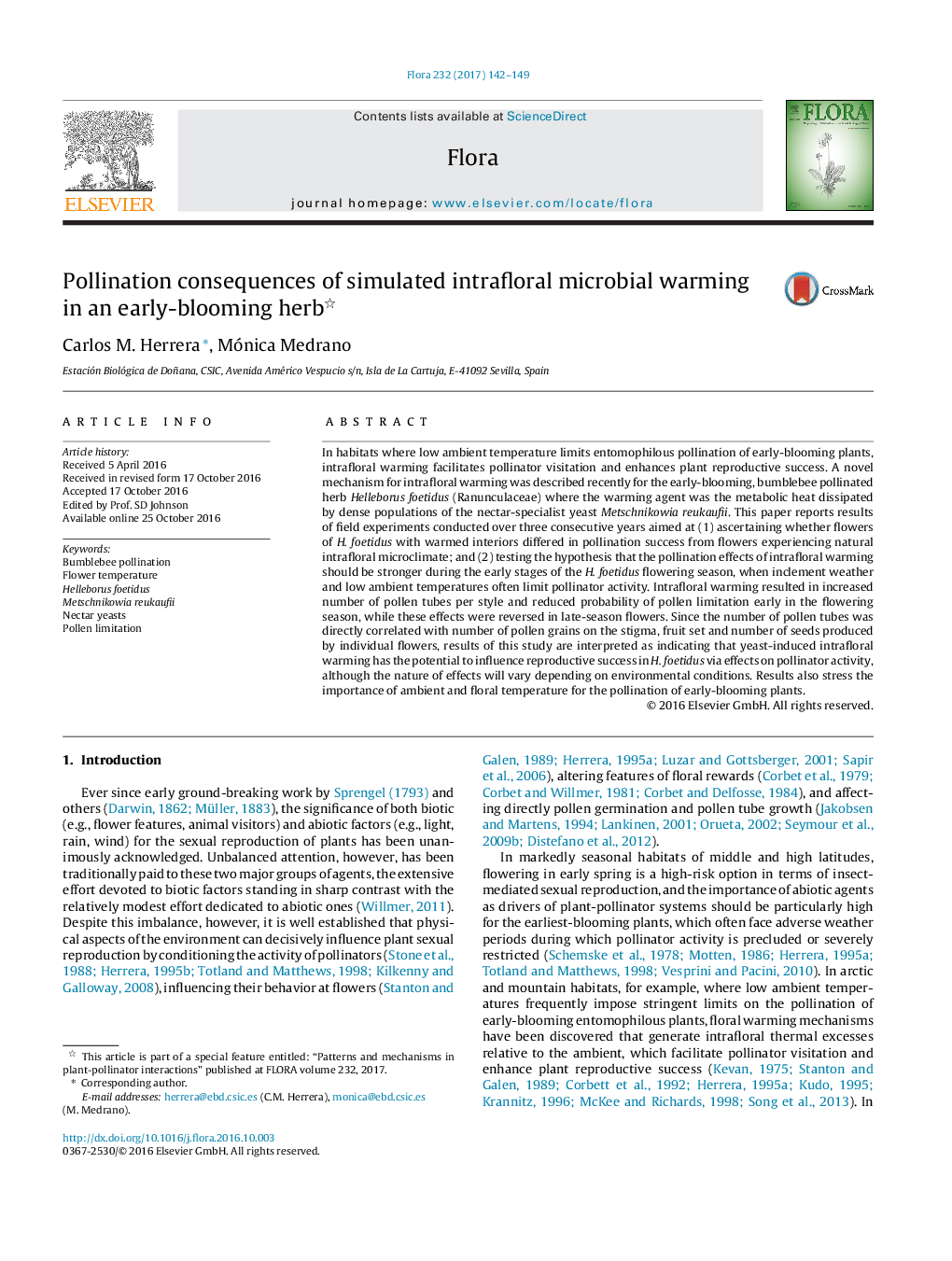| کد مقاله | کد نشریه | سال انتشار | مقاله انگلیسی | نسخه تمام متن |
|---|---|---|---|---|
| 5532466 | 1549927 | 2017 | 8 صفحه PDF | دانلود رایگان |
- Intrafloral warming experiments were done on early-blooming Helleborus foetidus.
- Warming strongly increased pollen tube number early in the season.
- Warming of late-season flowers slightly decreased pollen tube numbers.
- Nectar yeast-induced intrafloral warming can alter pollination success.
- Consideration of ecological context is essential to evaluate nectar yeast effects.
In habitats where low ambient temperature limits entomophilous pollination of early-blooming plants, intrafloral warming facilitates pollinator visitation and enhances plant reproductive success. A novel mechanism for intrafloral warming was described recently for the early-blooming, bumblebee pollinated herb Helleborus foetidus (Ranunculaceae) where the warming agent was the metabolic heat dissipated by dense populations of the nectar-specialist yeast Metschnikowia reukaufii. This paper reports results of field experiments conducted over three consecutive years aimed at (1) ascertaining whether flowers of H. foetidus with warmed interiors differed in pollination success from flowers experiencing natural intrafloral microclimate; and (2) testing the hypothesis that the pollination effects of intrafloral warming should be stronger during the early stages of the H. foetidus flowering season, when inclement weather and low ambient temperatures often limit pollinator activity. Intrafloral warming resulted in increased number of pollen tubes per style and reduced probability of pollen limitation early in the flowering season, while these effects were reversed in late-season flowers. Since the number of pollen tubes was directly correlated with number of pollen grains on the stigma, fruit set and number of seeds produced by individual flowers, results of this study are interpreted as indicating that yeast-induced intrafloral warming has the potential to influence reproductive success in H. foetidus via effects on pollinator activity, although the nature of effects will vary depending on environmental conditions. Results also stress the importance of ambient and floral temperature for the pollination of early-blooming plants.
Journal: Flora - Volume 232, July 2017, Pages 142-149
